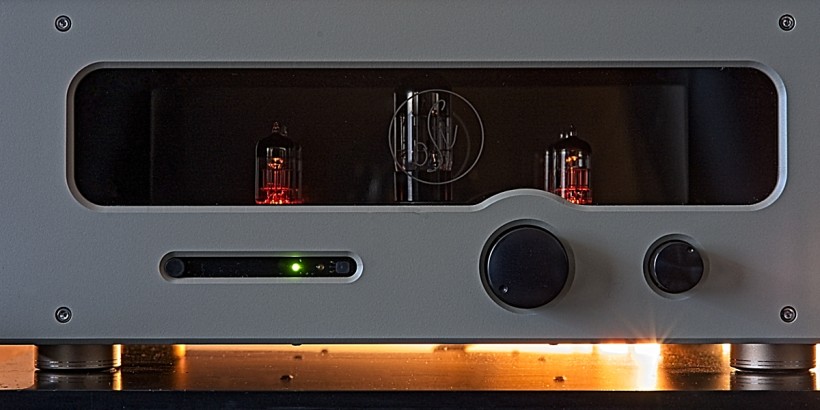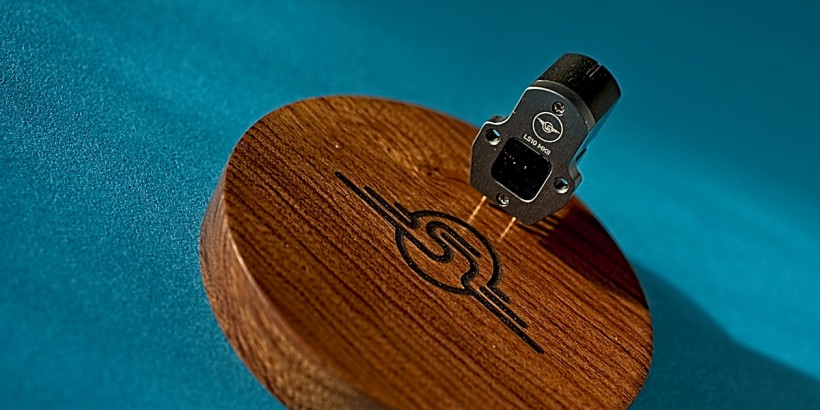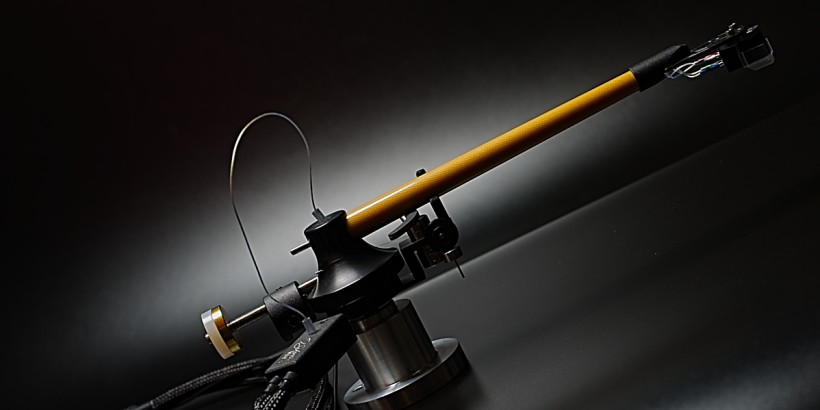For better or worse dynamic speakers have dominated the market. There are still some companies around the world though, that have chosen other paths to great sound. One of them comes from Hungary. Its name is Popori Acoustics and the J.Sikora company has recently become its ambassador in Poland.
It’s been just a moment ago, it would seem, that I traveled to Lublin for the grand opening of a brand new showroom at the J.Sikora’s headquarters. And there I saw and listened to many familiar components. All J.Sikora turntables and tonearms, obviously, the „old” Burdiak-Sikora tube amplifiers and line preamplifier, Aidas cartridges, Soyaton cables, SoundSpace Systems speakers, phono stages by LampizatOr and Doshi Audio, and Franc Audio Accessories racks and platforms – I hope I haven’t forgotten anyone 
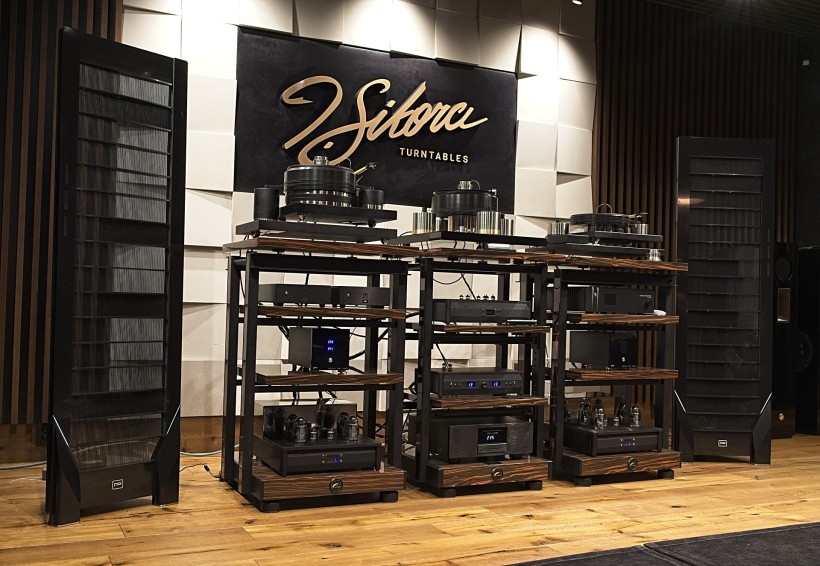
Some things have changed since then. The Burdiak-Sikora amplification returned to where it belongs, meaning to Janusz Sikora’s private listening room. The excellent Doshi Audio preamplifier and monoblocks, tube-based naturally, took their place. I had a chance to listen to them in Munich last year and liked them a lot. And so, it seems, did Janusz and Robert Sikora, as they ordered a set for their showroom. These will be used not only in the showroom as a reference amplification but also at the Audio Video Show in Warsaw later this year.
This time the system included also the top power conditioner by Gigawatt, namely the latest PC-4 EVO+. The real reason for coming to Lublin this time though, was a visit from four Hungarian gentlemen. A few weeks earlier they hosted Sikoras in Hungary. Two gentlemen represented a manufacturer of electrostatic speakers by Popori Acoustics, Otto Popori and Imre Kiss, and the other two, Zsoltan Kokai and Csaba Berente, represented AV Land, the Hungarian distributor of J.Sikora, among other brands. They came to install and present one of the Popori Acoustics electrostatic speakers, model WR1 that became a permanent part of J.Sikora’s showroom.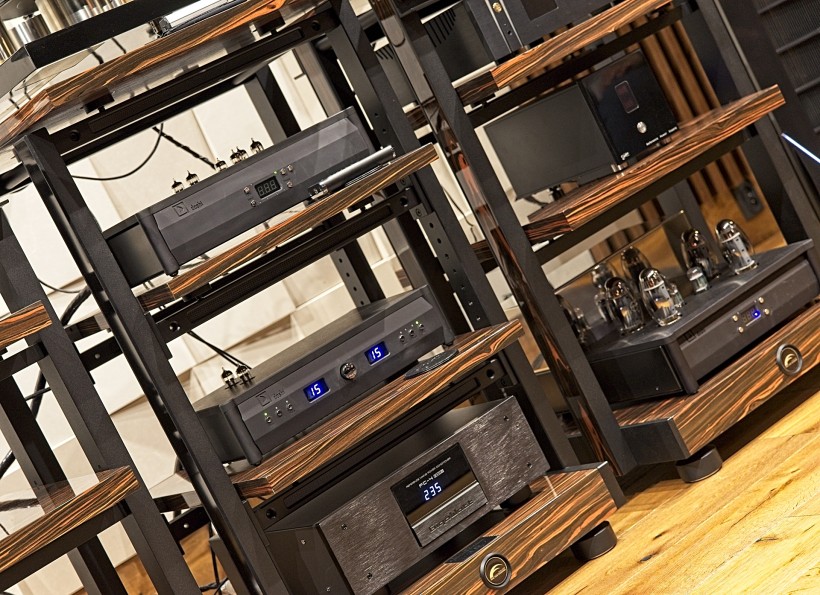
Some of you may remember Popori Acoustics speakers from last year’s presentation during Audio Video Show in Warsaw. The room was crowded most time so it wasn’t easy to get in and experience the performance of these electrostatic speakers, but the patience paid off. It was Jeff Fox, the American distributor of J.Sikora, who visited the Show and spent some time searching for interesting brands and products, who ‘discovered’ Popori. Later he became a distributor and suggested Sikoras to get to know the Hungarian speakers. And so first, Janusz na Robert Sikora visited Hungary and now Popori and AV Land representatives paid a visit in Lublin. The latter became J.Sikora’s Hungarian distributor, Sikoras purchased one of Popori’s models for their showroom and became sort of an ambassador of the brand in Poland. As I was told, Popori will look for a distributor in our country, but for now, J.Sikora’s showroom is the only place in Poland where one can listen to the WR1.
The visit to Lublin created an opportunity to talk to Mr. Otto Popori – owner and chief designer of the brand and Mr. Imre Kiss, the International Marketing Manager of the company. Below you will find a transcript of our conversation.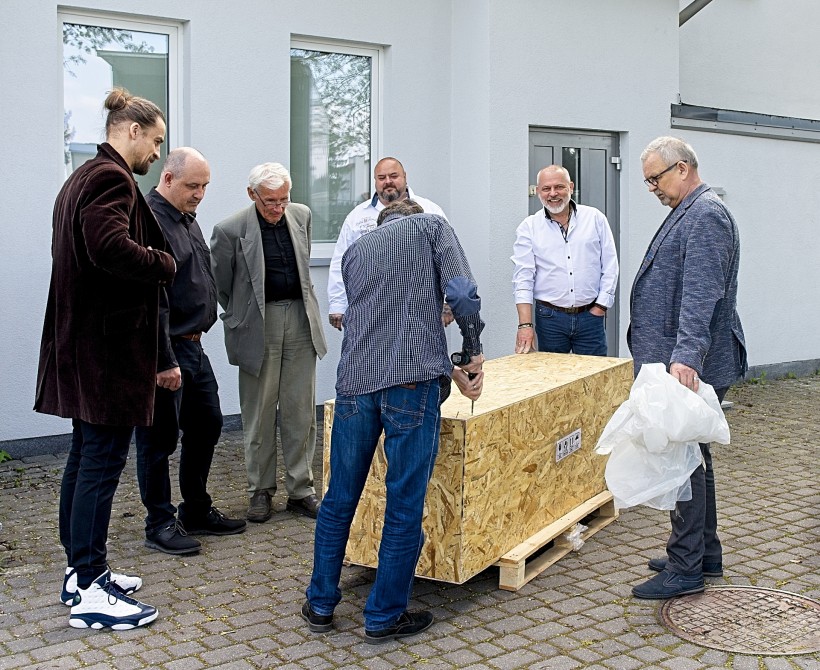
Marek Dyba (MD): OK, Imre, tell me about the company and its history.
Imre Kiss (IK): The company is called Popori Acoustics Limited and it has its headquarters in Hungary. It specializes in designing, developing, and handcrafting electroacoustic loudspeakers. The company as such is just two years old but has a rich history dating back almost three decades. The chief designer and the man the company was named after, Mr. Otto Popori, had dreamed of having the best electroacoustic speakers in the world for almost thirty years.
He met electrostatic speakers for the first time at an audio show in Hungary and it was love at first sight. It seemed to him that electroacoustic technology was probably the best one used to reproduce sound and music accurately and naturally, the same way as one can hear it at live concerts. It is a difficult technology to master, though, so he asked the manufacturer who demonstrated the speakers at the show how such speakers are made or if they could be made in Hungary. The manufacturer, from the USA, said the technology was too complicated, too sophisticated, and that there were no engineers clever enough in Hungary to make them.
Mr. Popori treated this answer as a challenge for himself and wanted to show the world that such an assumption was wrong and to prove that there are people also outside the USA or Western world, who could do it. It is true though, that it took over two decades to develop the first working prototype of an electrostatic speaker. Currently, we are the fourth or even fifth generation of electrostatic speakers.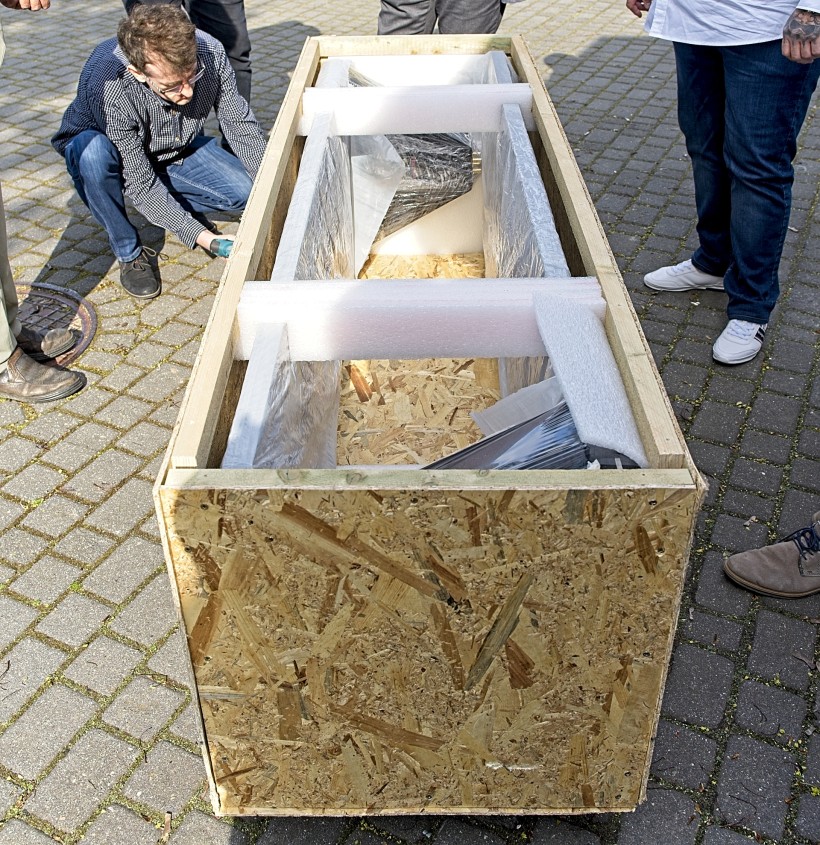
MD: It’s already 4th or 5th generation during those two years since the company has been founded?
IK: No, no, during the whole period of the development phase. The company has been established less than three years ago when the development process ended with the quality of speakers reaching a level that allowed us to transform it into a commercial product. In other words, it was good enough, reliable enough, and attractive to the eye enough. At that point, Otto met an industrial designer, Mr. Gabor Marko, who designed the eye-catching form for our speakers.
MD: And it seems, that you chose the ‘best’ possible time for starting the company, the Covid-19 pandemic period…
IK: It was a pure coincidence. But on the other hand, it was a quiet period that gave us more time and allowed us to focus on product development. One can say that electrostatic technology or electrostatic speakers are a curiosity on the market and some m some people believe that such speakers are not good enough and that they are not serious competitors to dynamic speakers.
As they claim, there are four fields that, supposedly, do not allow electrostatic speakers to reach the level of dynamic ones. The first of them is the frequency range. Some people believe that electrostatic technology does not allow the reproduction of deep and full-bodied bass while offering a very good midrange and treble. The second reservation towards electrostatic speakers is that they are not sensitive enough and thus they can’t play music loud. The third – they are ‘killing’ weak amplifiers because of their dramatic impedance curve. The fourth one says that they are unreliable, don’t offer proper longevity, and have to be refurbished after several years. Those were the challenges for Otto to show the world that all these are wrong assumptions.
Two years ago the first serial model was introduced to the market. They were full-range electrostatic speakers, delivering the full frequency range from 40 Hz up to 20 kHz.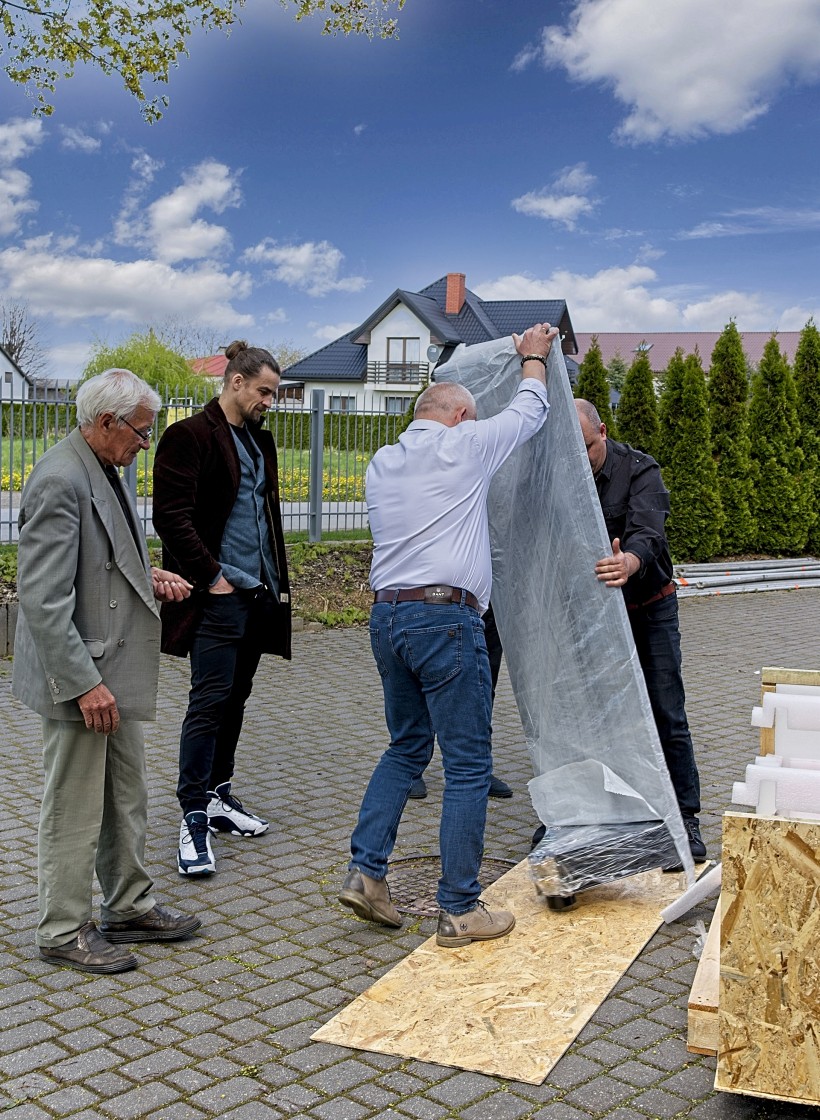
MD: Without an active bass section?
IK: Yes, without a subwoofer, without dynamic drivers, they were not hybrid speakers – just plain electrostatic speakers – that was the basic model. Then we developed a second line, the so-called wide-range electrostatic speakers. The original model was already a full-range one, but in the new one midrange and treble were supported with a ribbon tweeter. The main panel was capable of reproducing the full frequency range but it is supported with an additional tweeter for even better imaging and high frequencies.
MD: So it operates like super-tweeters in some dynamic speakers?
IK: That’s right. So it is a full-range speaker. Regarding sensitivity issues, even the smallest speaker in our range, and we currently offer five models, has a sensitivity of 90 dB which is good enough even for a dynamic speaker. 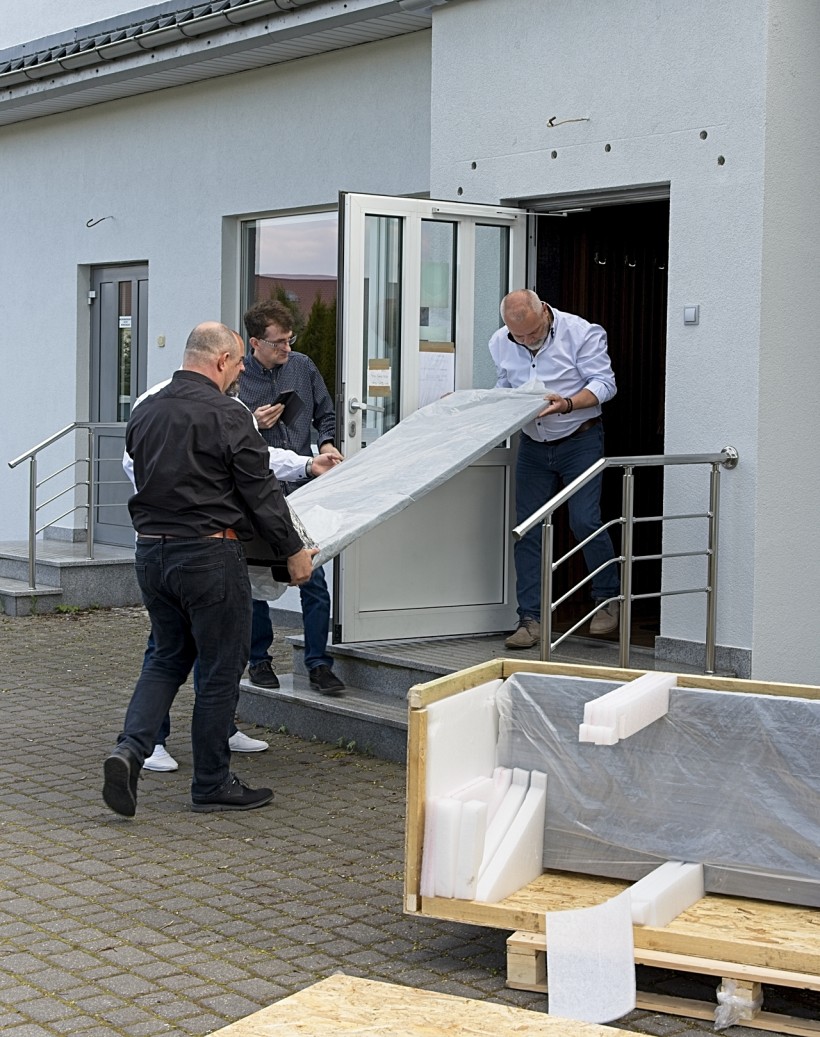
MD: Sensitivity is one thing, when it comes to a good match for low-output amplifiers, the other, maybe even more important one, is the impedance curve.
IK: That’s right. Let me speak about the impedance. Otto found an ingenious solution that allows him to control electrostatic speakers so that the impedance never, under no circumstances, falls below 2,5 Ohm.
MD: And the nominal impedance is 4 or 8 Ohm?
IK: It’s 4 Ohm, but it never falls below 2,5 Ohm hence there is no need for high-output amplifiers anymore so even a standard commercially available radio receiver can drive these speakers.
MD: So what is the minimum power requirement for your speakers?
IK: We recommend 50 Watts to have a full-bodied bass but in a small room even an amplifier with smaller output will do a good job. The maximum power handling for Popori speakers is 200-250W. Still, even with a 50W amp, you can generate a level of 105, and with larger models even 110 dB which is loud enough.
As for the longevity of our speakers, the first electrostatic model Otto ever built has been working for over 20 years already. And it was never re-foiled, never refurbished, never repaired and it still works perfectly, and the customer is happy with it.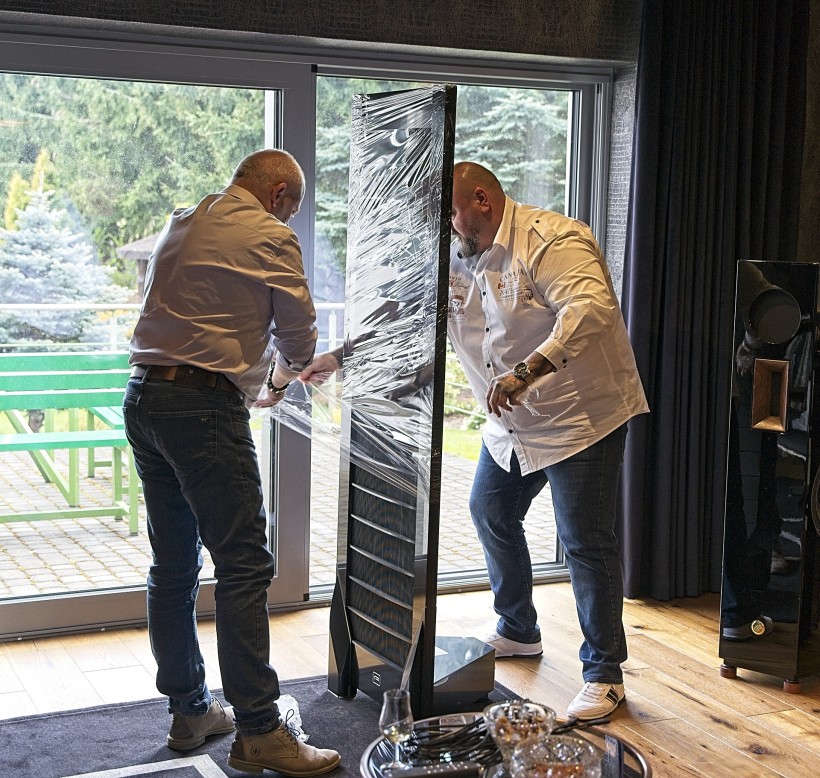
MD: It is not just about when they were produced but also about how hard they have been used. Some use their system an hour a week and those, such as myself, who most days play music more than 10 hours a day.
IK: Yes, you are right. But, I will not name names, still, there are some electrostatic speakers that feature foil that loses its properties whether it plays music or not. So even when not used they degrade over time and have to be rebuilt. Also, in some cases, if you try to play loud music with them it may lead to some damage and again, a need for repair. We offer a 5 years guarantee for our speakers plus a special upgrade policy. If they buy smaller speakers first and after some time want to upgrade to a larger model we take back the smaller one at its full price and deduct it from the price of a larger model.
MD: I like it – very customer-friendly approach.
IK: Yes, so I would say that buying Popori Acoustics speakers is a lifetime investment. And regarding the ability to play loud, as I told you, even the small model, 360, can easily generate a sound pressure of 105 dB. The largest model, which we recently presented in Hungary, consists of six units, so three electrostatic panels per channel including a full electrostatic high-frequency column can generate easily over 110 dB and it is loud enough.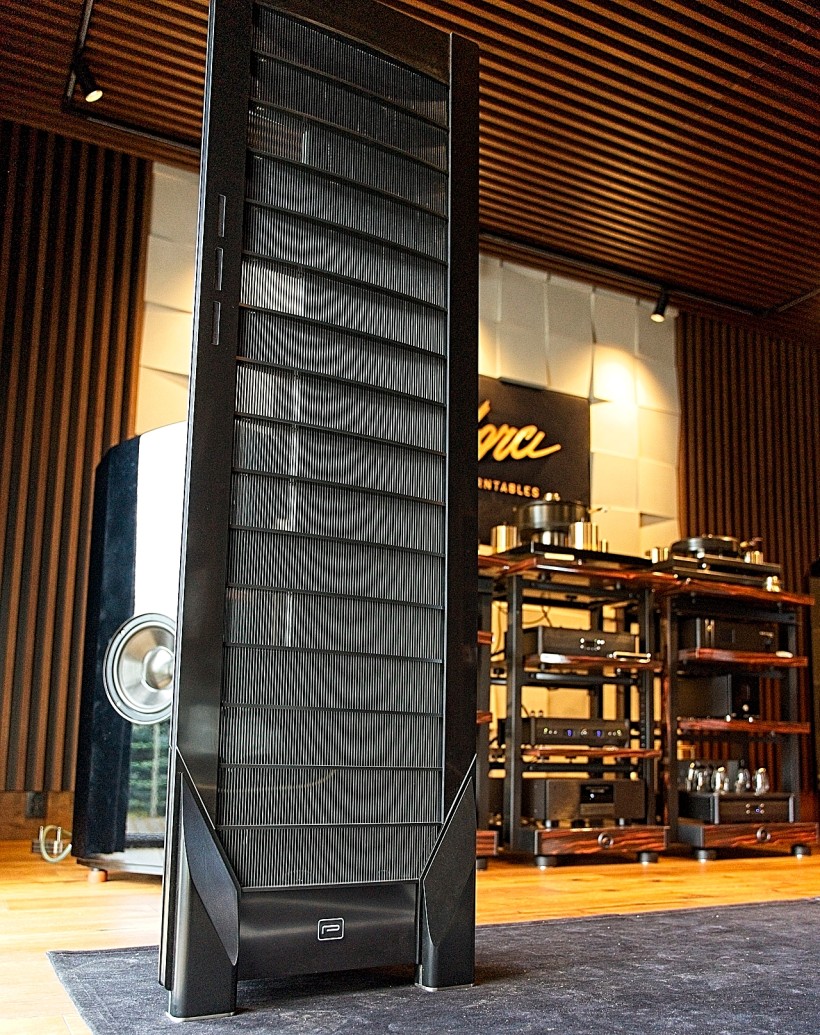
MD: That’s actually too loud for ‘normal’ people to listen to music at home.
IK: That’s right, yet we always inform customers that these are not some ‘bs’ speakers and they can play them really loud. Still, their major purpose is just to play music. If the music requires it, if the is a high-dynamic peak, our speakers offer enough headroom to play it accurately. Today we will have a chance to prove to you that these are not just empty promises or claims, but that our speakers can actually do what we claim they can. And also, Otto has found a way to prove that all four of those conjectures regarding electrostatic speakers are wrong.
As for the product range, we currently offer five models. The smallest one is W360 – all information is available on our website.
MD: OK, but give me an idea – how small are they?
IK: It’s not a small speaker at all, It is 1,8m high.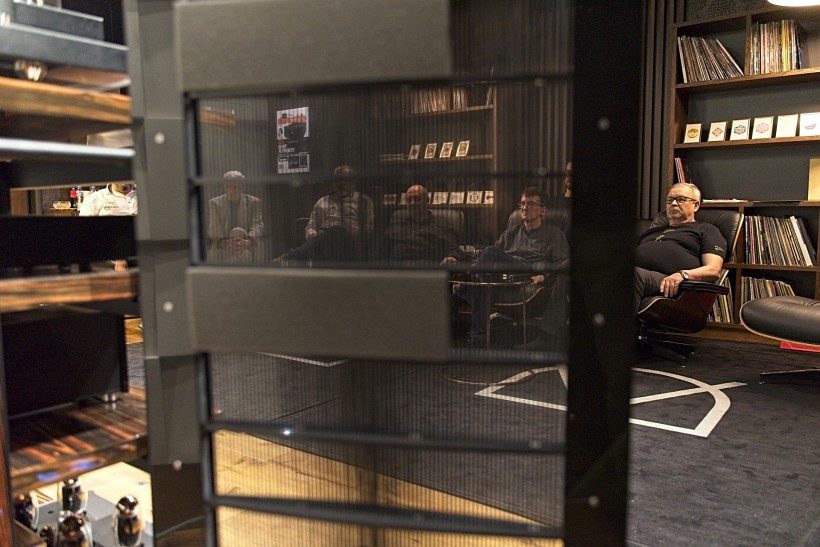
MD: And that’s the smallest one?
IK: Yes. So as you can see they are not the tabletop type of speakers. To achieve a natural sound from electrostatic speakers you need a certain minimum radiating area, meaning at least half a square meter of foil which is used as a membrane. So the physical size of the speaker is dictated by this requirement. This is a full electrostatic speaker, meaning there is no ribbon tweeter or dynamic drivers – a fully electrostatic model.
The second model, historically, is WR1, which is also the model you will listen to today here, at J.Sikora headquarters. It is a full-range speaker, which means that the foil panel covers the whole frequency range but it features also a super-tweeter. The recommended retail price for this model is around 50 kEUR.
It was our distributors who requested another model that would fit into the range between the two we already discussed. Our first answer was – it is not feasible, it can’t be done as it would require compromises that we couldn’t live with. But, on the flight back from Norway, with a flight time of less than two hours (!), Otto had already come up with a new design which ultimately became WR2. It is a smaller brother of WR1 featuring the same technology, including a super-tweeter, but to compensate for a smaller size, and smaller radiating area, the new model got ‘wings’ that support the rectangular area to create a higher sound pressure, plus they work as perfect damping to better control speakers.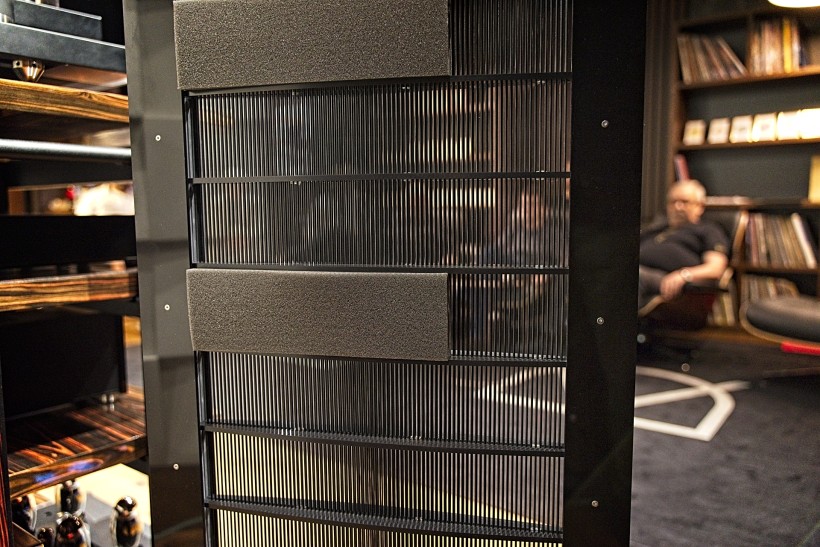
MD: So it is the main panel and two smaller ones on both sides?
IK: Yes, and, by chance, it turned out to be the best speaker that we ever made. Unfortunately, we are not in a position to demonstrate it now to you but if you come to Hungary or shall you visit our room at the Audio Video Show in Warsaw this year we will gladly demonstrate them to you.
We also offer the largest electrostatic speakers ever made, the XR1. It consists of two WR1, so two wide-range panels per channel plus the first ever, designed by Otto, electrostatic tweeter. So it is a 1,8m high tweeter.
MD: So you put them side by side, three of them?
IK: Yes, side by side, three per channel, so six panels in the whole stereo setup.
MD: So to use them one needs a castle or palace to put them in :).
IK: Yes, it can also be used to destroy a building…  And it costs a fortune, we are talking about a sum of around 180 kEUR, but it was a shocking experience for everyone who had a chance to listen to this model in Hungary. In March we held a meeting with all our trading partners and demonstrated the XR1 to them. When you listen to them you forget about everything else but music.
And it costs a fortune, we are talking about a sum of around 180 kEUR, but it was a shocking experience for everyone who had a chance to listen to this model in Hungary. In March we held a meeting with all our trading partners and demonstrated the XR1 to them. When you listen to them you forget about everything else but music.
MD: So how big a room one needs for these speakers?
IK: The size is a limiting factor, but if you have a 60 sqm room you could use them. The maximum space should be around 100-140 sqm.
MD: In other words, it’s a product for Americans…
IK: Yes, we designed them with the American and Asian markets in mind. The room we successfully presented them in was around 100 sqm and the presentation was very accurate and natural. You can find some videos from our presentation on our Facebook.
MD: OK, I will check it out. What amplifiers do you use for your presentations of Popori speakers?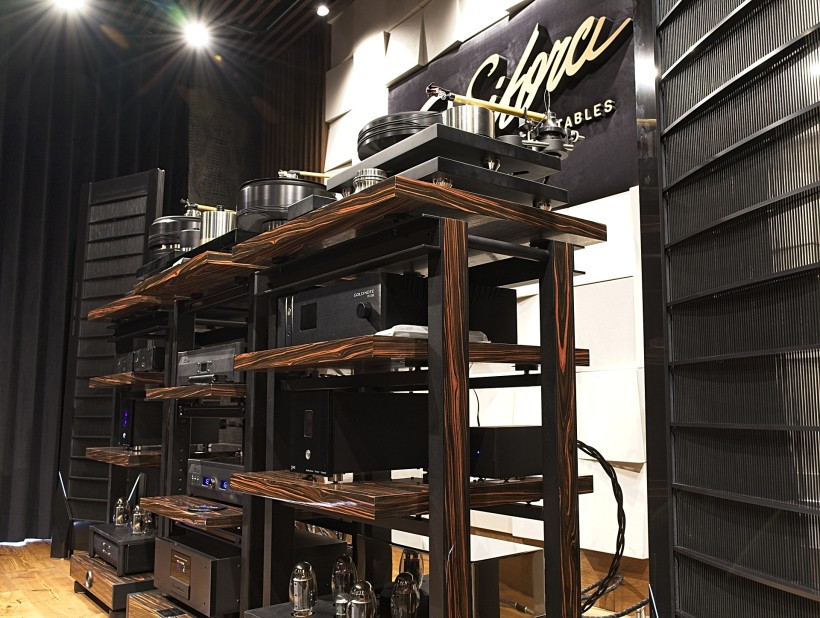
IK: As I already told you, our speakers are not particularly sensitive to amplifiers so you can use them with a wide range of good quality products. We had some of the best experiences with some old-school amps.
MD: Solid-state, tube?
IK: Both. The speakers like tubes because the latter offer a ‘mellow’ midrange and it results in a ‘British-type’ sound. So for acoustic instruments such as violin, piano, saxophone, trumpet and so on, tube amplification gives 5+ points to the speakers.
MD: It depends on whom you ask, but I belong to tube lovers so I like speakers that perform well with tube-based amplifiers.
IK: Here we will present our speakers for the first time ever with tube amplifiers by Doshi Audio – we have never had a chance to ‘marry’ these two together so we also wonder about the results. In our showroom, we use Hungarian-made tube amplifiers, but so far, when demonstrating speakers abroad we always used solid-state amplification, such as by Moon, and some old ones from 1980ties.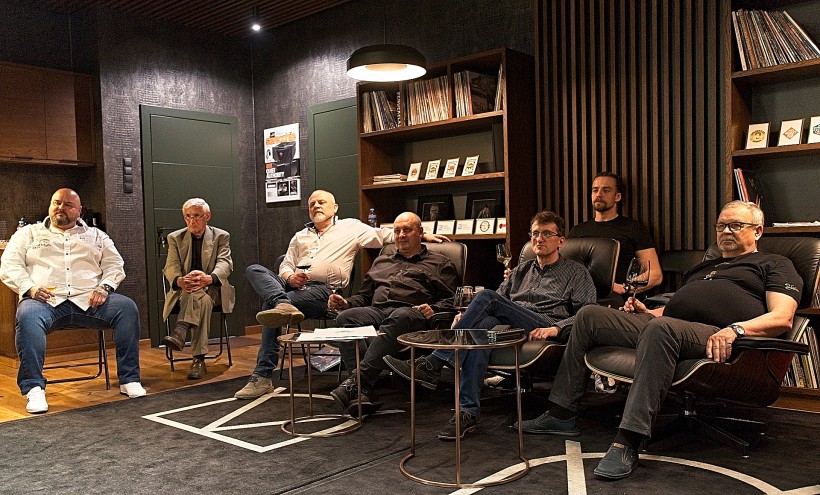
MD: Hybrid amplifiers could be an interesting match for your speakers.
IK: Maybe. I would say, that we have not found the perfect match so far so we are open to ideas. On the other hand, so far no amplifier delivered truly bad results with our speakers either. I can say that to our surprise, the most expensive amplifiers we paired Popori speakers with were not the best ones to drive them.
MD: My guess would be, based on what I’ve heard so far, that the best matches for your speakers are truly musical amps.
IK: Yes, it would seem so. From our experience, it seems that the best matches for our speakers come from similarly priced ones. There is another interesting fact about our speakers – they are absolutely insensitive to cables. So what we are using – Otto, could you show Marek the cables we are using? 
MD: That’s not an audiophile cable at all :).
IK: Yes, we showed it already to the audience at Warsaw Show – we use almost hair-thick silver wires in Teflon tubes and these are good enough to drive the speakers because they latter work based on a different principle than other speakers. The foil itself weighs less than 10g so we do not have much mass to move.
Otto Popori (OP): What I am showing you is actually a jumper for speakers posts – we only use a single wire for that and it works – we will show you later.
IK: That is the best speaker cable we’ve ever used with our electrostatic speakers. You can use other cables, of course, but that is unnecessary. Another important thing – the speakers are fed by a 12V voltage, not hundreds of volts, so they are perfectly safe to use. They are heat-resistant and water-resistant, they are also spouse-friendly as they look really nice and do not take up much space.
MD: But probably require a lot of dusting?
OP: No, they do not! There is a dust cover, plus we deliver also a brush to clean them easily.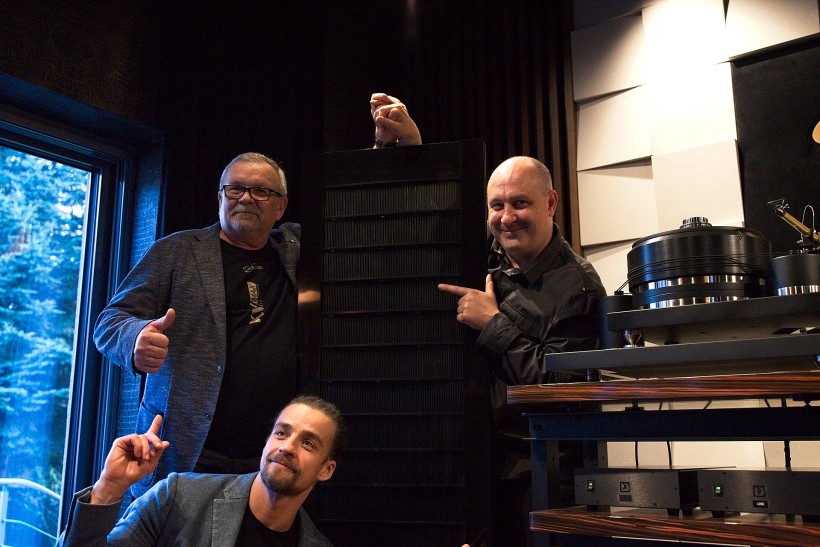
IK: There are two limitations though, that we always try to make users aware of. First, do not use a vacuum cleaner, and do not use any sharp tools to clean your Popori speakers. Generally speaking, they are almost indestructible, but if you cut the foil they will need to be repaired.
MD: OK, still, let’s talk about everyday usage. People have kids and pets – how sensitive are your speakers to damage?
IK: Sure, a cat could scratch/tear the foil, that is why we use the dust covers for most models. Only WR1 do not have it so owners have to take care of protecting these speakers from physical damage, but so far we haven’t heard of this type of situation. Also, the foil is the cheapest part of the speaker so when it happens replacement won’t be very costly.
MD: But one has to send speakers back to the factory for a foil replacement, right?
IK: Yes. On the other hand, the whole electronics are hidden in the box behind the panel, and in very rare cases, as we use only high-quality components and expect them to last a lifetime, of some failure, only the box can be removed. The whole electronic circuit was built in such a way, that the components can be easily replaced so distributors, who hold a stock of some spare parts, can replace a faulty component themselves. It was yet another reason to organize the meeting for the distributors to educate and train them about all of it. Only the re-foiling of the panel has to be done in our factory.
The speakers are available in various colors. The basic material for the frames is Corian – mineral-based resin material used in the furniture industry but also in audio. It has its own colors so we do not need to paint it. It is a very good material. It looks nice, elegant even, it is cost-effective, easy to process, and available in almost any color. We can add patterns, engrave logos, or in other words, custom-finish them. Later this year, or next year, we plan to change the technology so that frames could be replaced, by a distributor, even at the customer’s, on request.
OP: Let’s point out, that our speakers are not only quite big but also heavy. They weigh 50kg each.
MD: Which model?
OP: The WR1. The smallest one is just around 20 kg a piece, so it is a lightweight champion. The WR2 is about 35 kg a piece. So the WR1, as you will see soon, is sent in a solid wooden crate that protects speakers against almost any possible damage that could occur during transport. They are packed in pairs so the shipping weight with this wooden crate is around 115 kg. We ship them even overseas and they always arrive safely so packaging serves its purpose well.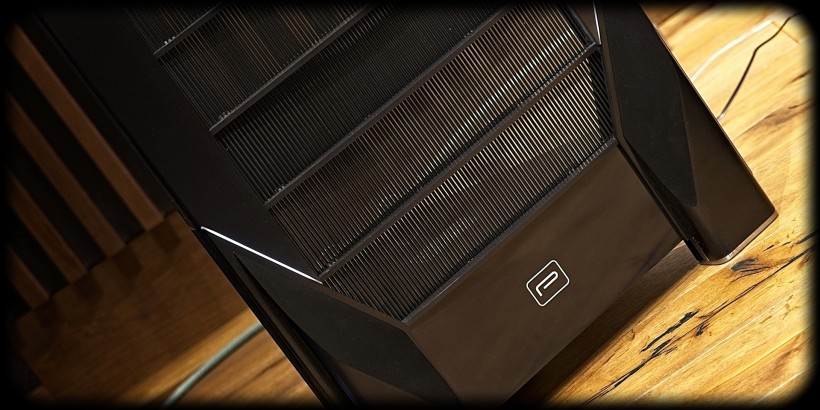 MD: How many distributors do you have already?
MD: How many distributors do you have already?
IK: At the moment we have six.
MD: After only two years it is a good result.
IK: We also think so, plus one of them is from the USA, which was a very positive surprise for us.
MD: You mean Jeff (the American J.Sikora distributor; ed.)?
IK: Yes, Jeff. We met him at Audio Video Show in Warsaw.
OP: Also in Warsaw, we were very successful as we received one of the Best Sound of the Show Awards.
IK: I can also proudly say, that for most of the time our room was full of people and they seemed to enjoy the sound a lot. It was yet another confirmation for us, that we’d developed really good speakers. And to be honest, internally, we usually call them musical instruments rather than speakers, because when you listen to, say, a violin sonata, you can hear the violin rather than the speakers. And if you listen to the same piece in various interpretations you can assess who is the best violinist. That is good enough, it shows that Popori speakers are capable of presenting differences between instruments. You will also have a chance to compare some recordings we like to use for presentations listening to them using the speakers that are already here (SoundSpace Systems Pirol; ed.) and our WR1.
MD: OK, thank you for the interesting conversation, and now we can start our listening session.
As we all know quite well, often from our own experiences, even the best-laid plans often go awry. The Hungarian gentlemen came to Lublin a day earlier (than me) and so the speakers shipped with a forwarder were supposed to. But they didn’t. They were delivered several hours after my arrival. The upside was me witnessing the delivery of a huge, solid crate and the whole process of unpacking and setting them up in the room. The downside was clear – first of all, setting up took time, and secondly, the speakers (as almost any audio component) after spending a few days on the road and in various warehouses had no chance to perform optimally for the presentation. Yet, the team did their best, changing positioning, damping (there are removable panels on the back of the speakers that allow them to adjust damping to the acoustic environment they have to play in), and finally also speaker cables.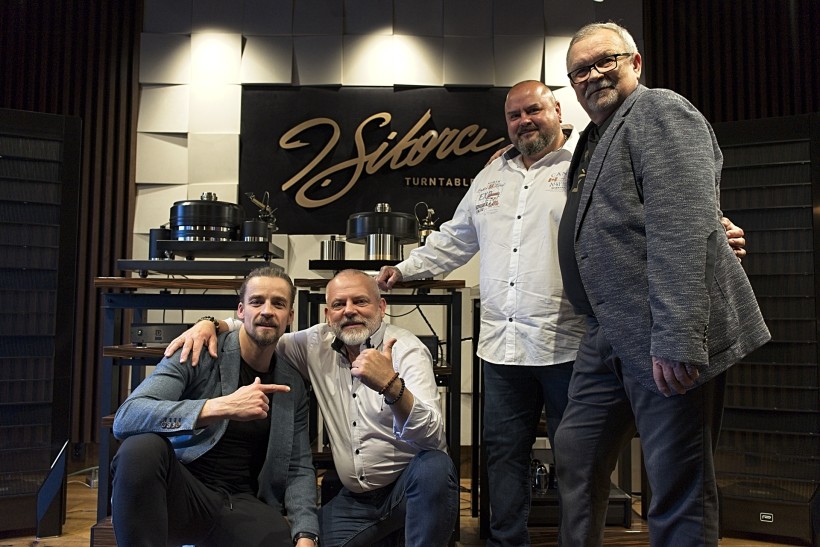
With every passing minute, OK, let’s say every 10 minutes, the sound improved and by the end of the evening the performance was really good. The WR1 speakers proved, among other things, that they can deliver a full-range sound with deep, quite powerful bass. Sure, the semi-active Pirol offered even deeper, tighter bass but the Popori kept improving over time. Still, it seemed to me, that their lower bass was and probably would be a touch rounder/softer than the Pirol’s even after full accommodation in the system. It’s not a downside but a feature that works great with acoustic instruments – double bass or piano, where the lowest notes are never super-tight.
The midrange presented by these speakers was really great right from the start and despite the fact it kept improving over time. It was rich, open, very natural and expressive, and already quite refined despite improving over time. The treble at first seemed a bit dark, but all the changes introduced by Popori guys, toe-in, damping, and speaker wires, kept improving and opening this part of the range, although it remained a bit on the sweet side. Overall the presentation belonged to the type I personally love – immersive, organic, musical, and delivered with beautiful flow – one that clearly states: it is the MUSIC that is most important here, all the rest are just means to this particular end. Let me add, that the pairing with Doshi Audio’s electronics and J.Sikora turntables and arms seemed to be a very good one.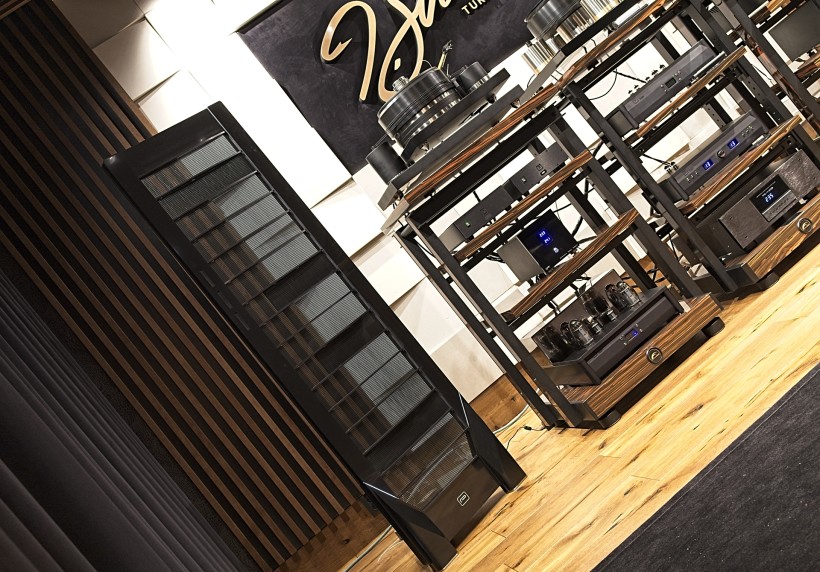
To be clear – I didn’t have much time and it was my first closer contact (after a brief one during AVS in Warsaw, that doesn’t really count) with Popori Acoustic electrostatic speakers so I couldn’t really assess their performance. All the remarks are just my initial, yet admittedly very promising, impressions. We have agreed on a review of the WR1. It will happen most likely after the holidays, and I can’t wait to have the WR1 here in my room. It will give me a chance to take w deeper dive into their performance and offer you an actual assessment of the Popori Acoustics WR1. Until then, please notice that a new, exciting brand is now present on our market (and several others). If you have a chance to get to know their products whether you already like electrostatic speakers, or you don’t, or maybe you belong to those who think such speakers can’t offer a high-end performance, don’t think twice – just do it! I can assure you it will be (at least) an interesting experience.



